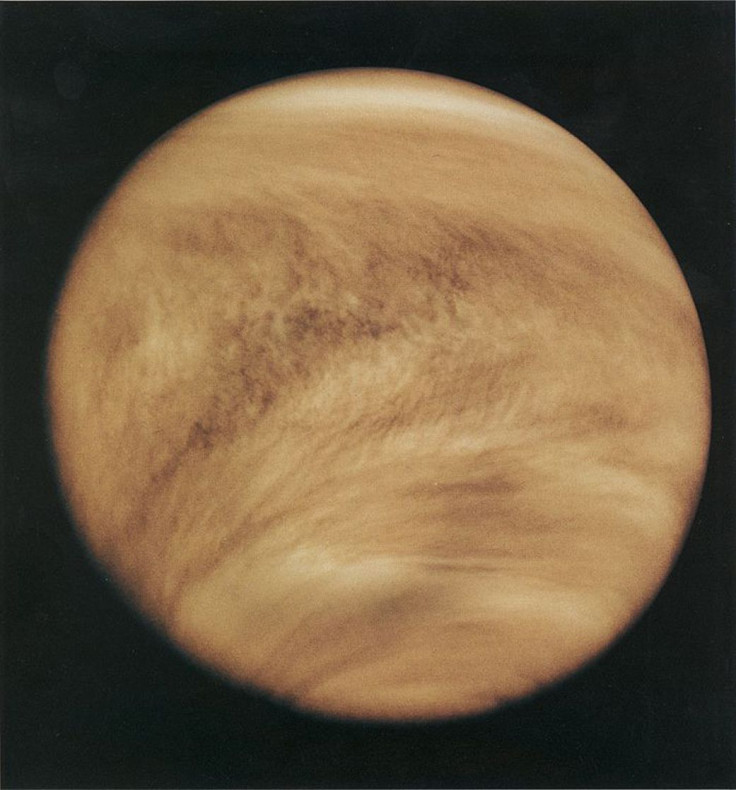Is There Life On Venus? Gas On Earth Detected In Planet's Atmosphere
KEY POINTS
- Astronomers detected the chemical phosphine in Venus' atmosphere ine June 2017, sparking nearly three years of observation and research
- Scientists previously believed Venus' heat and toxic atmospheric makeup meant chemicals like phosphine couldn't exist for long periods of time
- While some scientists were excited at the prospect of Venus housing microbial organisms, others cautioned there may still be an inorganic cause
A new discovery on the planet Venus has scientists and astronomers wondering if there could be life on Earth's closest planetary neighbor.
The findings were reported in a paper published Monday in Nature Astronomy after a group of astronomers detected and observed the chemical phosphine in Venus’ atmosphere for nearly three years. It was considered a surprising discovery because the planet’s atmosphere is considered so acidic any trace of phosphine would immediately disperse.
Using the James Clerk Maxwell Telescope in Hawaii and Atacama Large Millimeter/submillimeter Array in Chile, researchers observed Venus since it was discovered in June 2017 to try and locate a geological or chemical reason to explain phosphine’s presence. However, no discernable source was ever identified during their observations. This led the group to reach two possible conclusions – Venus’ atmosphere was creating surprising chemical reactions to produce phosphine or microbial organisms reside within the atmosphere.
“This is an astonishing and ‘out of the blue’ finding,” Massachusetts Institute of Technology planetary scientist Sara Seager, one of the paper’s authors, told the New York Times. “It will definitely fuel more research into the possibilities for life in Venus’ atmosphere.”
Seager’s comment reflected the excitement at the discovery among the research team and similar excitement was seen by other researchers about the prospect of life on Venus.
“There’s been a lot of buzz about phosphine as a biosignature gas for exoplanets recently,” Georgetown University planetary scientist Sarah Johnson Stewart said.
“Venus has been ignored by NASA for so long. It’s really a shame.”
Stewart’s comment is in reference to ongoing research and observation focused further out in the Solar System. Any research into alien life historically focused on Mars while the icy moons of Europa and Enceladus have drawn scientists focus more recently.
Venus was largely ignored due to the planet being considered inhospitable to any form of life due to the atmospheric makeup. Most of the atmosphere is comprised of carbon dioxide and sulfuric acid, making it a highly toxic atmosphere. The atmosphere serves to trap heat from the sun, as well, and essentially bake the planet in dangerously high temperatures.
Venus’ temperature typically averages over 800 degrees Fahrenheit, making it the hottest planet in the Solar System despite Mercury being closer.
However, some scientists have cautioned there may still be some unidentified source for the gas that isn’t biological. The University of California, Riverside associate professor of planetary astrophysics Stephen Kane told NPR the gas could be “remnants of some past ecosystem” rooted in the planet’s geology that sustained itself in the upper atmosphere.
“We do need to seriously consider that there is a much more natural geological explanation that we just haven't figured out yet,” Kane said.
Despite his statement, Kane said he is still excited about the finding because it raises new questions about the planet referred to as “Earth’s sister planet” due to the similar size and mass. He also said its close proximity to Earth makes observation and potential travel much easier for space agencies around the globe.
“This is a test for us because in this case, we can go to Venus,” Kane said. “This is really an incredibly important test for the whole concept of biosignatures.”

© Copyright IBTimes 2024. All rights reserved.





















